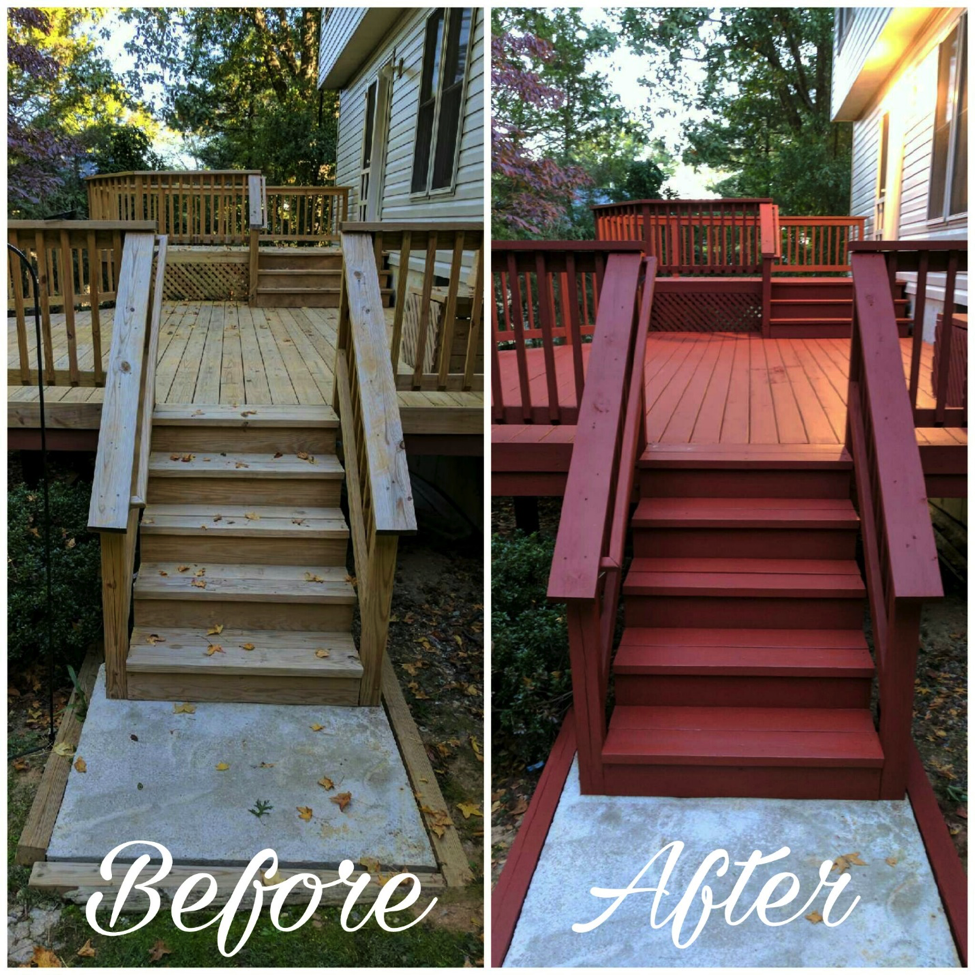Preserve and Secure: Let Loose the Power of Fence Staining
Preserve and Secure: Let Loose the Power of Fence Staining
Blog Article
Choosing the Right Stain for Your Fencing: Tips and Factors To Consider
When it comes to preserving and enhancing the look of your fencing, selecting the best discolor is essential. With a wide array of choices available, it can be overwhelming to determine which tarnish will finest suit your needs. This overview will give you with ideas and considerations to aid you make an informed choice. We will certainly explore the different kinds of fence stains, elements to think about prior to choosing a stain, suggestions for preparing your fence for staining, and the differences between oil-based and water-based discolorations. Additionally, we will explore picking the best stain shade to enhance your fence and improve your outdoor area. By following these standards, you can make certain that your fencing continues to be secured and cosmetically pleasing for years ahead.
Understanding Various Sorts Of Fence Spots

On the various other hand, water-based stains are made from acrylic or latex and supply a much more subtle shade to the wood. Water-based spots are easier to cleanse up and have a faster drying time compared to oil-based spots.
Picking in between oil-based and water-based stains depends on various variables, consisting of personal preference, the preferred look, and the degree of maintenance needed. Oil-based spots are recommended for fence high-traffic locations or those continuously subjected to severe weather. fence staining. Water-based stains, on the various other hand, are a prominent selection for fence suburbs where appearance and convenience of use are necessary
Recognizing the differences between oil-based and water-based discolorations aids house owners make a notified decision when choosing the ideal tarnish for their fencing. Taking into consideration the particular requirements of the fencing, such as its place, exposure to sunshine, and desired aesthetic, will certainly make certain that the picked discolor offers resilient security and improves the overall appeal of the fencing.
Variables to Consider Before Picking a Spot

Different kinds of wood take in stains in different ways, resulting in varying degrees of color strength and sturdiness. Additionally, particular woods may be extra susceptible to concerns like rot or insect infestation, which might influence the option of tarnish to protect the fencing and secure.
The environment and weather problems in your location need to also be taken into account. You might need a discolor that provides additional protection versus dampness and UV rays if you live in an area with rough winter seasons or high humidity. Likewise, if your fence is subjected to direct sunlight for extended periods, a stain with UV inhibitors can assist prevent fading and discoloration.
Finally, it is very important to consider your desired visual. Various discolorations use numerous shades and surfaces, enabling you to customize the appearance of your fencing (fence staining and sealing). Take into consideration the general style and style of your building, as well as any regional regulations or property owner association standards that may determine the appropriate stain shades
Tips for Readying Your Fencing for Staining
To prepare your fence for discoloration, beginning by extensively cleaning the surface area utilizing a mild detergent and a stress washer or scrub brush. Cleansing the fencing is an important action as it removes dirt, grime, and any type of previous layers that may disrupt the discoloration procedure. Begin by moistening the fencing with water and afterwards use a light detergent utilizing a scrub brush or a pressure washing machine with a low-pressure setting. Scrub the surface area gently, paying additional attention to areas with stubborn spots or mold and mildew. Rinse the fence thoroughly with clean water to remove all traces of detergent.
After cleaning, enable the fence to dry completely. fence staining. This step is important as staining a moist or damp surface area can bring about inadequate attachment and an uneven finish. Relying on the weather conditions, it may take anywhere from a few hours to a couple of days for the fencing to completely dry completely. Make sure that the fencing is totally dry before proceeding with the staining process.
Prior to discoloration, check the fencing for any kind of damages, such as loose boards or nails. Repair any kind of issues to ensure that the fencing is structurally sound. Furthermore, take into consideration using a wood conditioner or brightener to the surface. This item aids to open up the wood pores, allowing the tarnish to pass through a lot more properly and uniformly.

Contrasting Water-Based and oil-based Stains
When picking a tarnish for your fencing, it is essential to contrast the attributes and benefits of oil-based and water-based spots. Both kinds of discolorations have their very own benefits and factors to consider, so it is important to comprehend the differences between them.
Oil-based spots are recognized for their sturdiness and resistance to wear and tear. They permeate deeply right into the timber, offering excellent protection against the elements. They additionally enhance the all-natural charm of the wood by highlighting its grain and structure. In addition, oil-based discolorations have a tendency to last longer than water-based spots, making them a preferred choice for fences.
On the other hand, water-based discolorations are extra eco pleasant and easier to tidy up. They have a reduced VOC (unstable natural compound) web content, which implies they release less hazardous fumes right into the air. Water-based stains also completely dry much faster, permitting a quicker application and less downtime. They may not provide the exact same degree of security as oil-based spots, especially in extreme weather conditions.
Eventually, the option in between oil-based and water-based spots depends upon your certain needs and choices. When making your decision, think about factors such as durability, ecological influence, and ease of application. Consulting with a professional or looking for suggestions from specialists can additionally help make sure that you select the best stain for your fence.
Picking the Right Spot Color for Your Fence
The option of an ideal stain shade for your fencing is a vital facet of enhancing its aesthetic allure and matching the overall style of your outdoor space (fence staining companies). The best tarnish color can transform a plain, regular fence right into a striking focal factor that adds depth and character to your residential or commercial property
When picking a discolor color for your fencing, it is important to consider the style and style of your home. Natural tones such as neutrals and browns can produce a cozy and welcoming appearance if you have a standard or timeless design home. On the other hand, if you have a contemporary or modern home, you could take into consideration choosing strong and lively colors that make a statement.
An additional factor to think about is the natural environments of your property. If you have a lot of plant, a tarnish shade that enhances the all-natural landscape, such as eco-friendlies or crimsons, can produce a harmonious and natural look.
Furthermore, it deserves taking into consideration the maintenance needed for different discolor shades. Lighter shades have a tendency to show dust and put on even more easily, while darker colors can conceal flaws and need less regular touch-ups.
Ultimately, the option of discolor color for your fence need to show your individual style and choices - fence staining nashville tn. Put in the time to explore various alternatives and get in touch with with experts if required, to ensure that you pick the perfect discolor shade that boosts the appeal and charm of your fencing
Verdict
Finally, when it concerns picking the appropriate stain for your fencing, it is essential to understand the various kinds of spots readily available and take into consideration variables such as toughness and desired appearance. Preparing the fencing appropriately before discoloration is essential for attaining ideal outcomes. Furthermore, comparing water-based and oil-based stains can aid establish the finest option for your specific demands. Choosing the best tarnish color go now can boost the general aesthetic appeals of your fencing.
We will explore the various types of fence discolorations, elements to take into consideration before picking a discolor, tips for preparing your fence for discoloration, and the distinctions in between oil-based and water-based discolorations.Separating between oil-based and water-based stains is essential when understanding various types of fencing spots. Water-based stains are simpler to clean up and have a quicker drying out time contrasted to oil-based stains. Furthermore, oil-based discolorations have a tendency to last longer than water-based stains, making them a popular option for fencings.
In conclusion, when it comes to choosing the best discolor for your fencing, it is important to recognize the various types of spots readily available and take into consideration aspects such as resilience and desired look.
Report this page